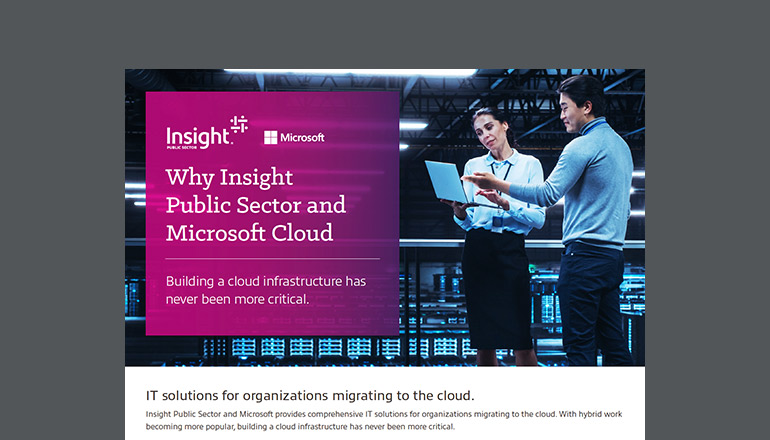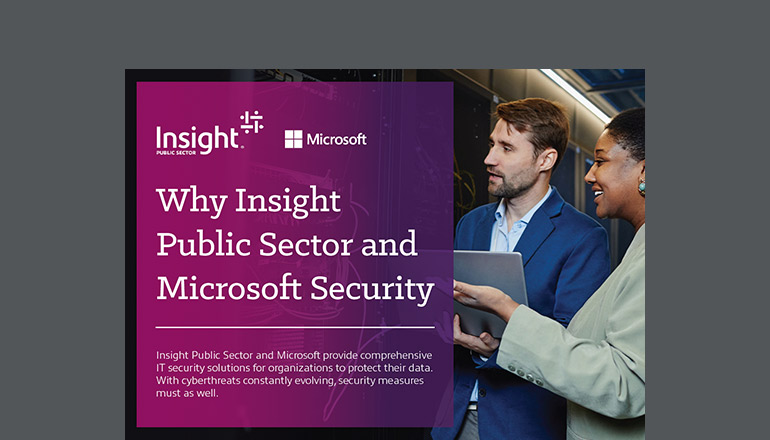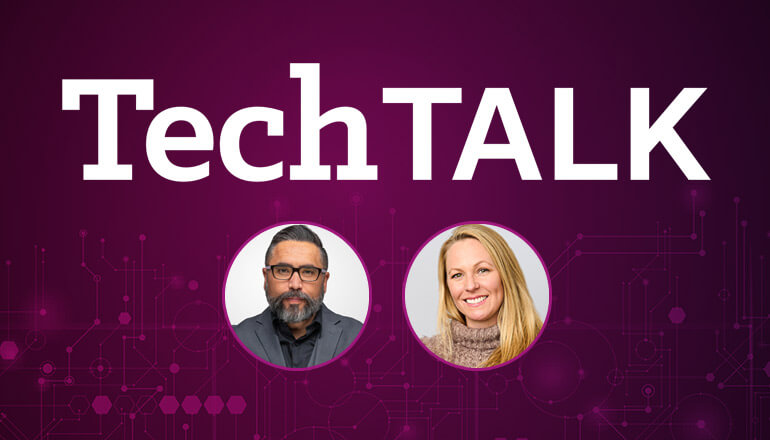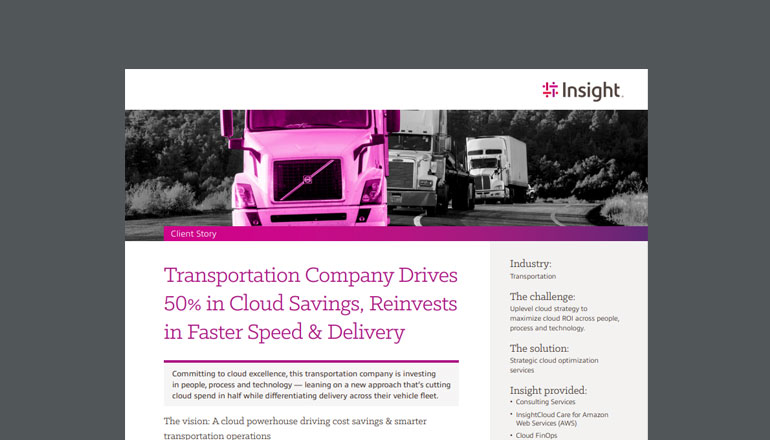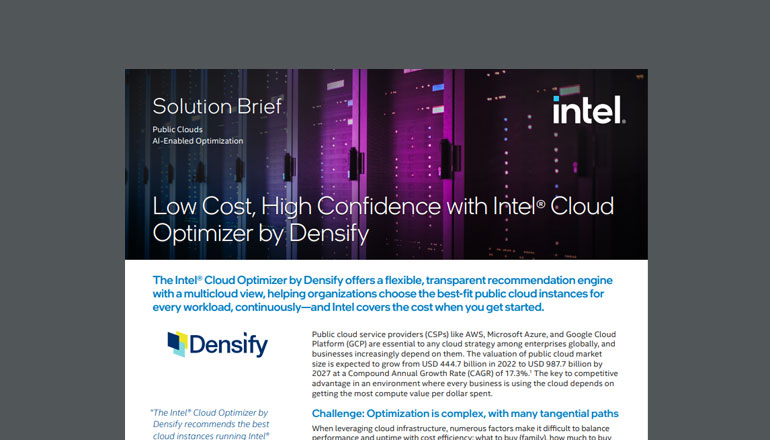You’ve heard the expression “hindsight is 2020.” Entering 2021, and nearing a year since the start of the COVID-19 pandemic, this has never been more true. We have the benefit of looking in the rearview mirror at the incredible heavy lifting it took to adapt technology to accommodate remote work everywhere. But the Titanic shift is still occurring, and no matter the size of the municipality — state and local governments continue to face budget cuts and yet, are pushed to run faster toward IT modernization to improve the lives of citizens and users.
Insight and Genetec had the chance to learn from two state and local government IT decision-makers on a panel at the Minnesota Government IT Symposium. Although the municipalities they represent are very different, you might be surprised to notice the commonalities they faced in 2020. Together Insight Public Sector Leader for Digital Innovation, Sandeep Sinha, and Commercial Head of Cities and JPS at Genetec, Bob Carter, interviewed the Chief Information Officer (CIO) of the City of St. Louis Park, Minnesota, Clint Pires, and the Deputy CIO of the Washington, DC Metropolitan Police Department, David Clow. We’re providing a recap of the four main points of this helpful and insightful discussion.
1. Both CIOs experienced cost savings and budget cuts.
Each faced their share of budget cuts due to loss of taxpayer funding. With the shutdown of non-essential businesses like restaurants and salons, sales tax earnings decreased — erasing income the DC Metropolitan Police Department IT team depends on. And with parks and recreation facilities closed in the City of St. Louis Park, Minnesota, fees that support the City of St. Louis Park’s initiatives were delayed or never generated. Both teams of professionals were forced to do more with less.
The dip in funding was to be expected once the shutdowns occurred starting in March 2020 and fluctuating in stringency until now. Yet with less money to spend, they still had to find a way for administrative teammates to work remotely, and officers to minimize visits to the station. Laptops and remote office equipment were quickly deployed into the field. In the first half of 2020, a time with much economic uncertainty, they were forced to spend unexpected funds just to “keep the lights on.”
But what surprised both CIOs were the cost savings their departments have experienced. For instance, almost overnight, employees were forced to take what IT equipment they used at the office home. Many of them left their printers and, due to the need for safer, contactless agreements, they were forced to quickly adopt paperless signatures and documentation. As a result, less money was spent on ink and paper and they each found themselves with a nice budget surplus in this category.
2. Accelerate digital transformation.
Historically, government agencies have been distrustful of cloud computing and Wi-Fi. But out of necessity, Pires and Clow had to send their teams home to work remotely, like many all over the world. Let’s state the obvious of this shared experience: Usually, this type of change takes months or years of planning, but instead it happened in an instant.
With the availability of more efficient cloud technology and the need for innovation in their departments, the CIOs had been pushing for digital transformation prior to the pandemic, but faced challenges evangelizing the changes. They understood that with the right strategy, working in the cloud is safe.
Because of the immediate demand for physical distancing, both experienced the benefits of accelerating data transformation initiatives. Both agreed, they’ve had an easier time making changes they’ve needed for a long time.
As part of the transformation, they’ve moved from hosted software to a Software as a Service (SaaS) application model. Vendors have been flexible to work with, since they’re facing the same work-from-home challenges. They’ve been helpful in working with competing brands and financing.
Clow stresses the importance of data ownership in making the transition to a SaaS application model. He emphasizes the importance of asking vendors for an API integration. “Our data is our data ... so if we have vendors that don’t want to work together, we can still take those data sources from each vendor to get the reports and results we want on the backend for our in-house team,” he says. “Vendors have been much more flexible since the pandemic in honoring these requests.”
3. Engage users in the discovery phase.
Both CIOs want apps users can access in the field and while working remotely. They need unsiloed and easily actionable data. Ultimately, the goal of their technology is to make users' lives and jobs easier. This means moving on from hosted applications and procuring new solutions — a process that can be cumbersome within government agencies.
In order to transform and modernize their technology stack efficiently, they need their users on board and feedback from stakeholders is key. They’ll also experience the real struggle of balancing fulfilling requests with managing users’ expectations for timelines and project scope.
Pires utilizes a community technology advisory board for valuable feedback. He also stays closely focused on the city council’s five strategic goals. At times, users may try to request an impressive product, and if it doesn’t align with those goals, it becomes clear the solution won’t support the city’s initiatives. He has found it easier to say “no” when reminding stakeholders of these five strategic goals.
Clow, Pires and host Carter stress the importance of user education. Clow invites users to product demos so they can provide valuable feedback to vendors. They know exactly what their needs are and can communicate what’s most important. And since the procurement process can be long in government, he engages users early in the process to help them understand hurdles and timelines.
Pires asks users for real data and real scenarios to provide to vendors in the solution vetting process. Instead of canned demos, he asks vendors to tailor their presentations based on these actual problems the department is facing, making for much more effective decision-making.
Carter has found from a vendor perspective, it’s much more helpful to invite users to micro presentations for each department. These focus specifically on what each user group will actually engage with. His team has experienced this approach to be much more effective than longer presentations where each product feature is shared with everyone.
4. We can do this.
At the heart of these CIOs is their desire to make their communities a better place. Through the smart city concept, Pires and his team have reduced their data center footprint and sought to support the city’s goals, doing more with less. He emphasizes an Agile approach as the root of their success, and mentions benefiting from working with Insight as a technology partner.
Pire explains, “I see something happening that I never thought would take place in the public sector ... I see Agile development taking hold. I see these sprints occurring and I think it’s great because we’re needing to adapt on the run. We’re needing to change these applications to fit quickly evolving situations.”
Clow’s existing beliefs about his team and users were reinforced by the flexibility and dedication displayed in the past year. He trusts his team and users to stay productive, and the huge transition to working from home has only reinforced that. He checks in with his teammates on a personal level, to find out how they’re doing.
Both teams have shown it’s possible to grow through the challenges, and humbly share an impressive list of accomplishments heading into 2021. We have no doubt these local agencies will continue to innovate and demonstrate what’s possible with the right technology and strategy in this new year and beyond.

